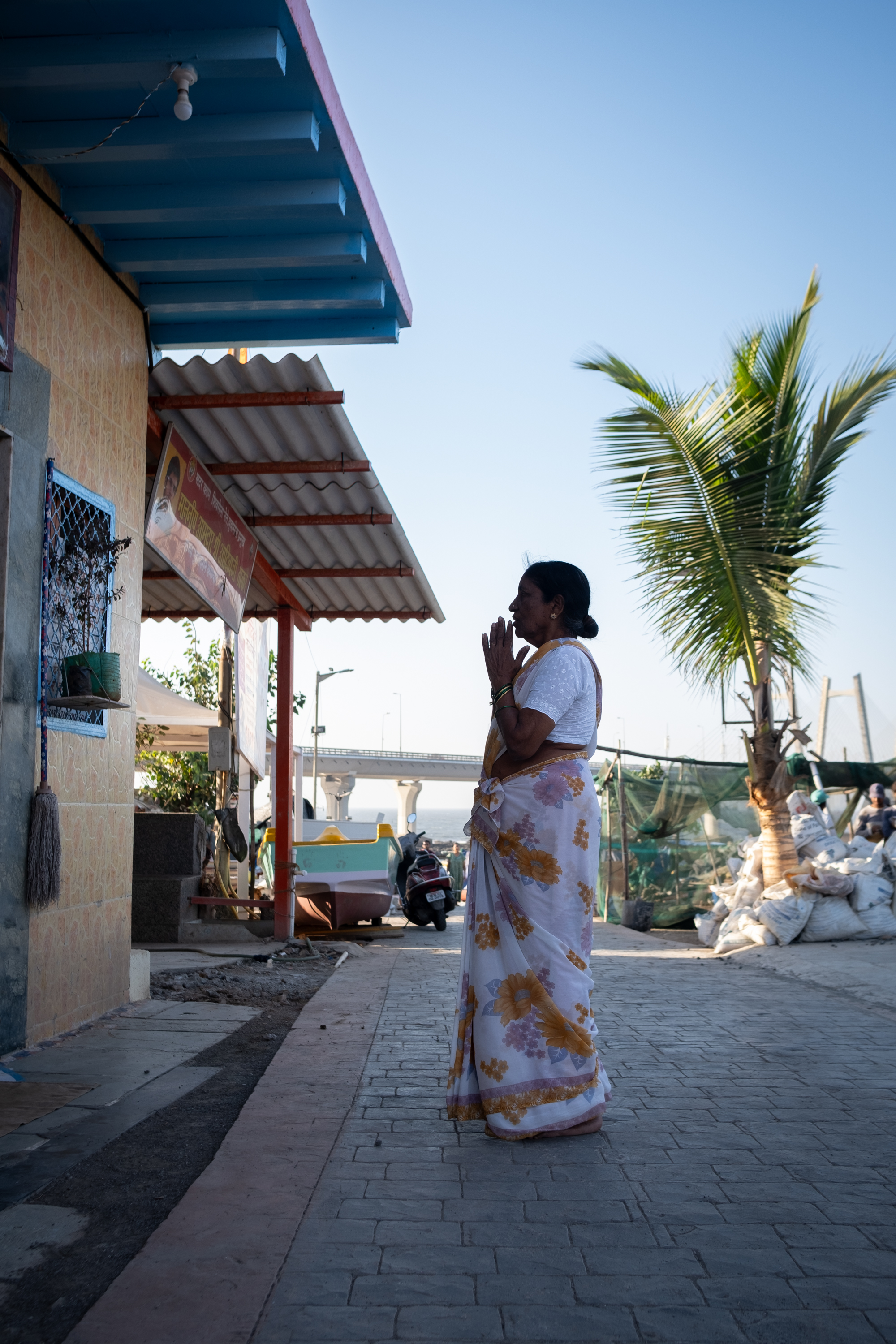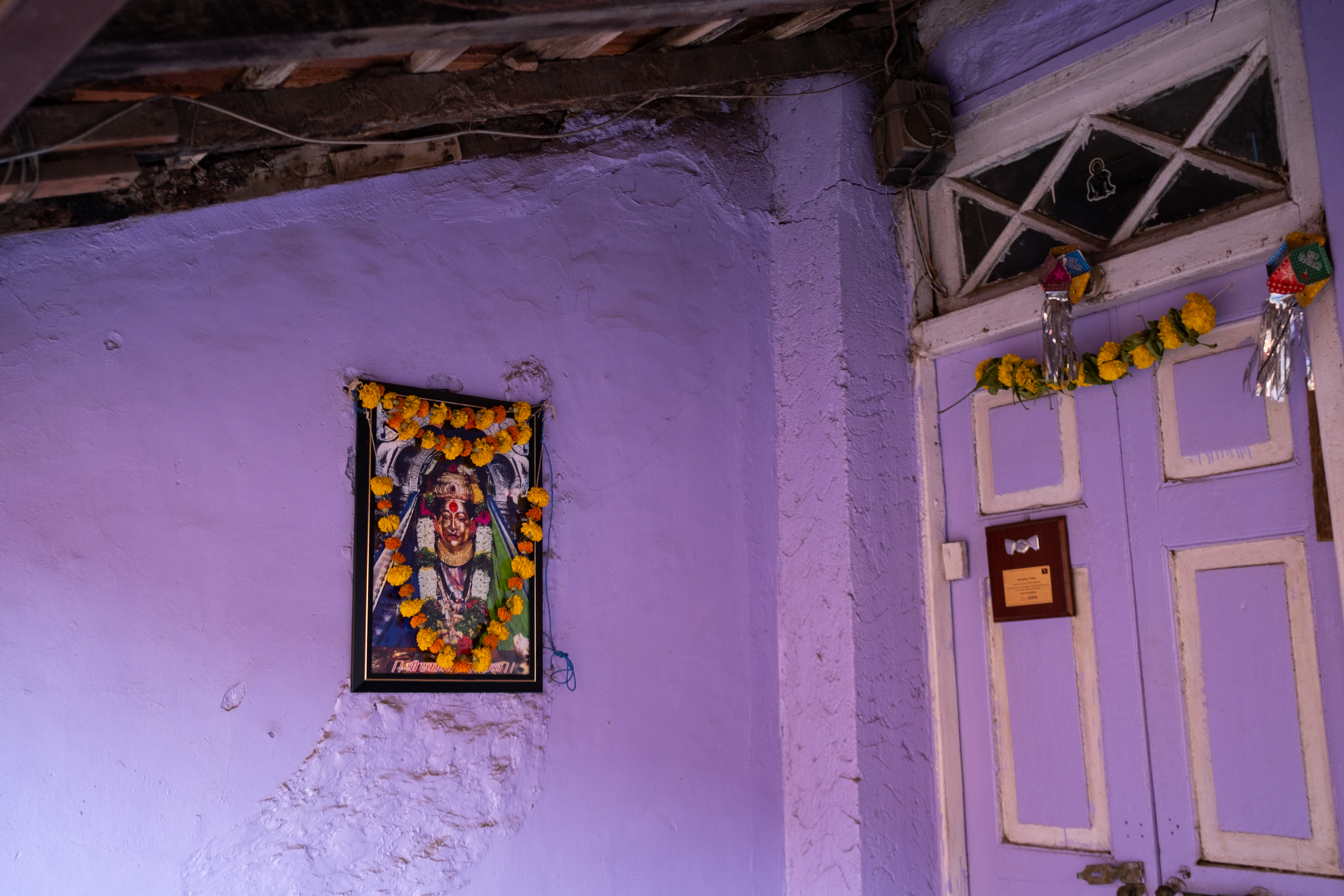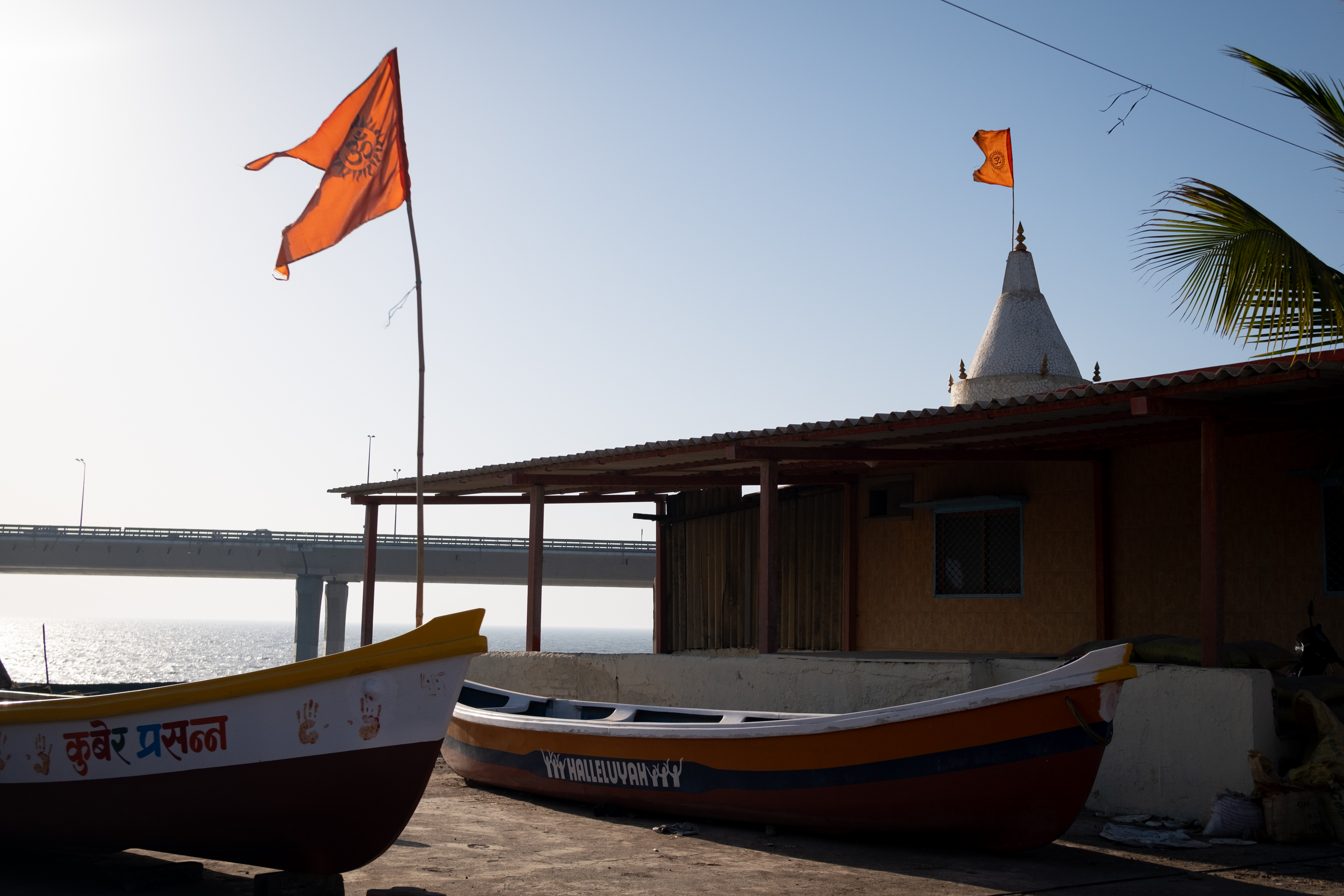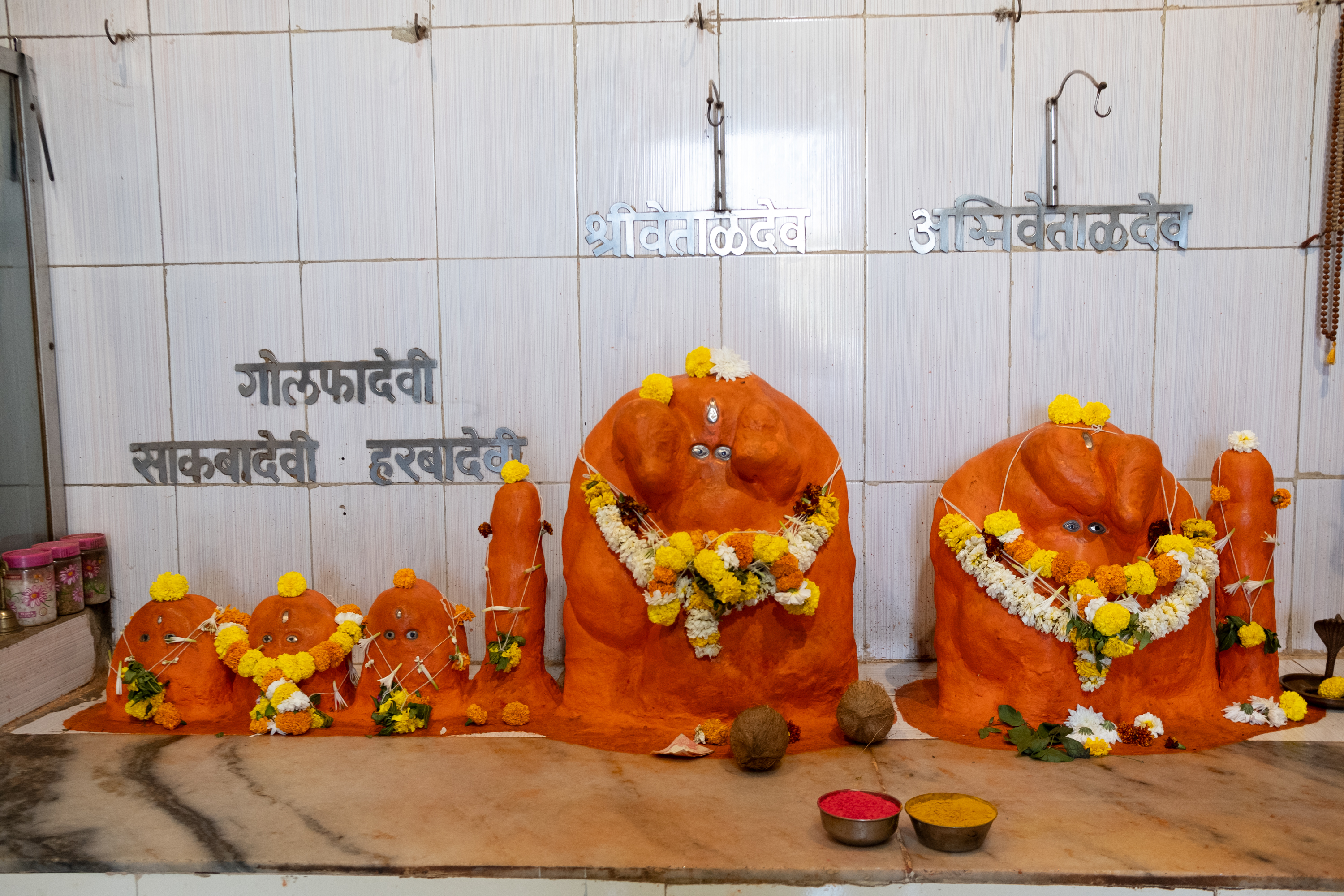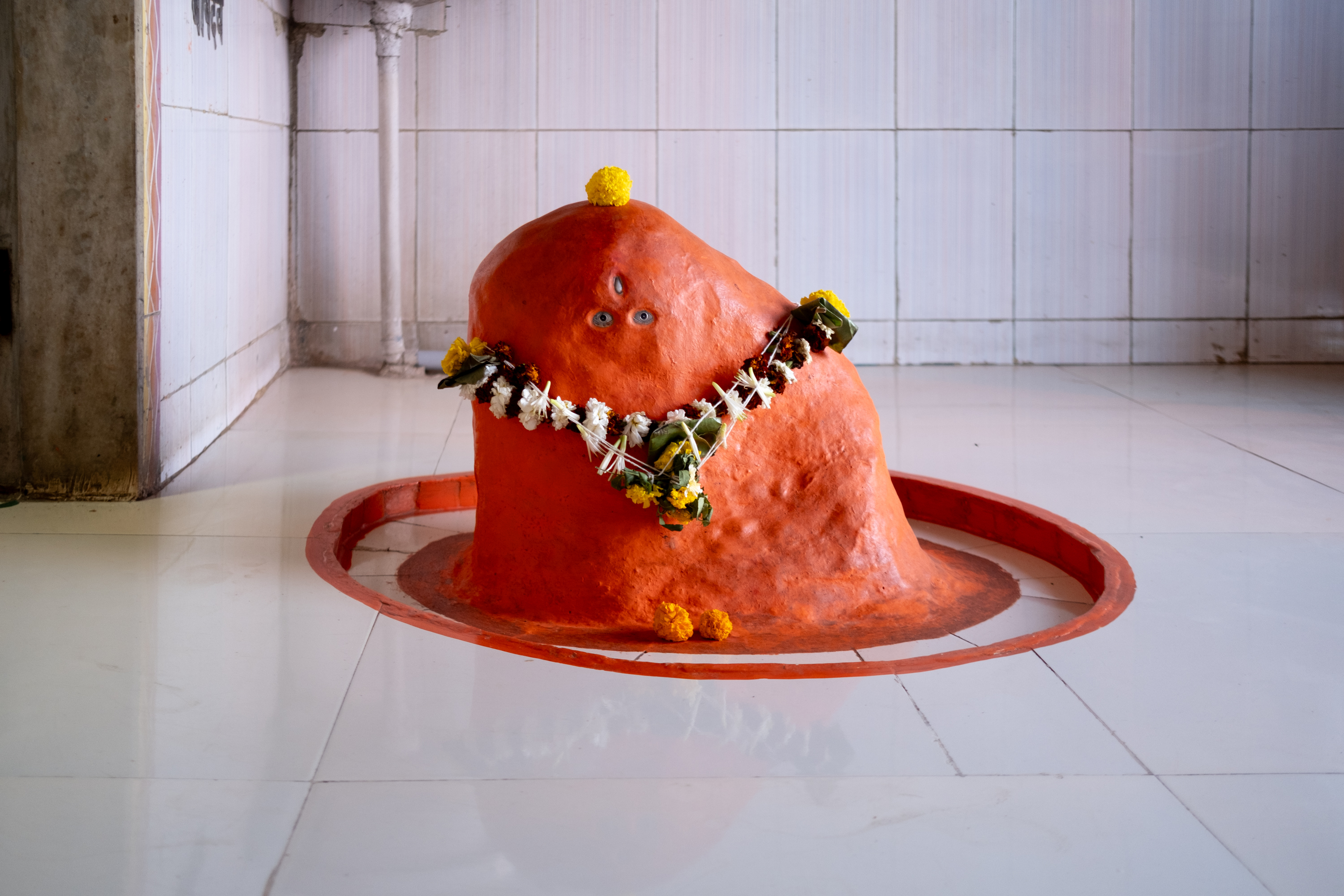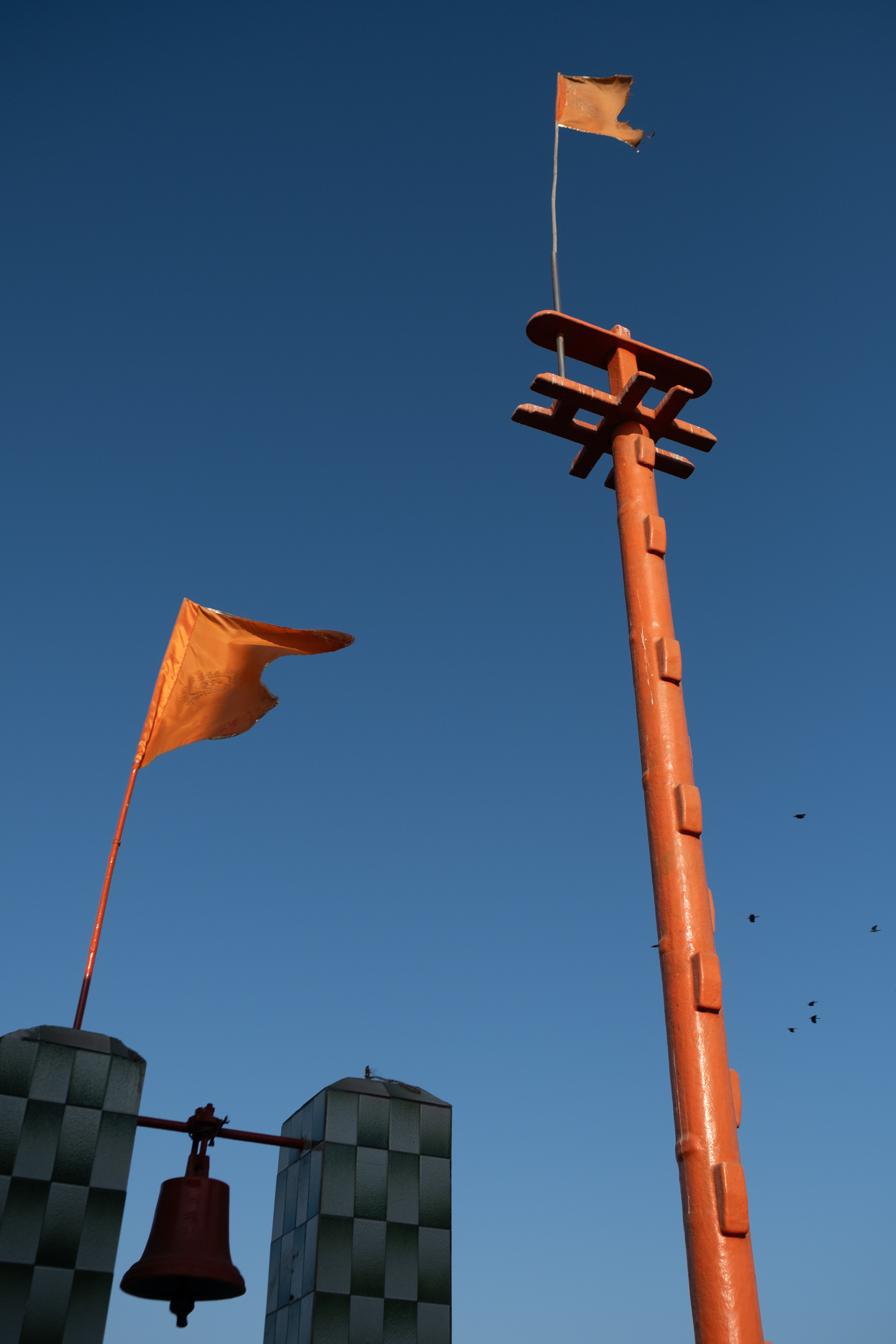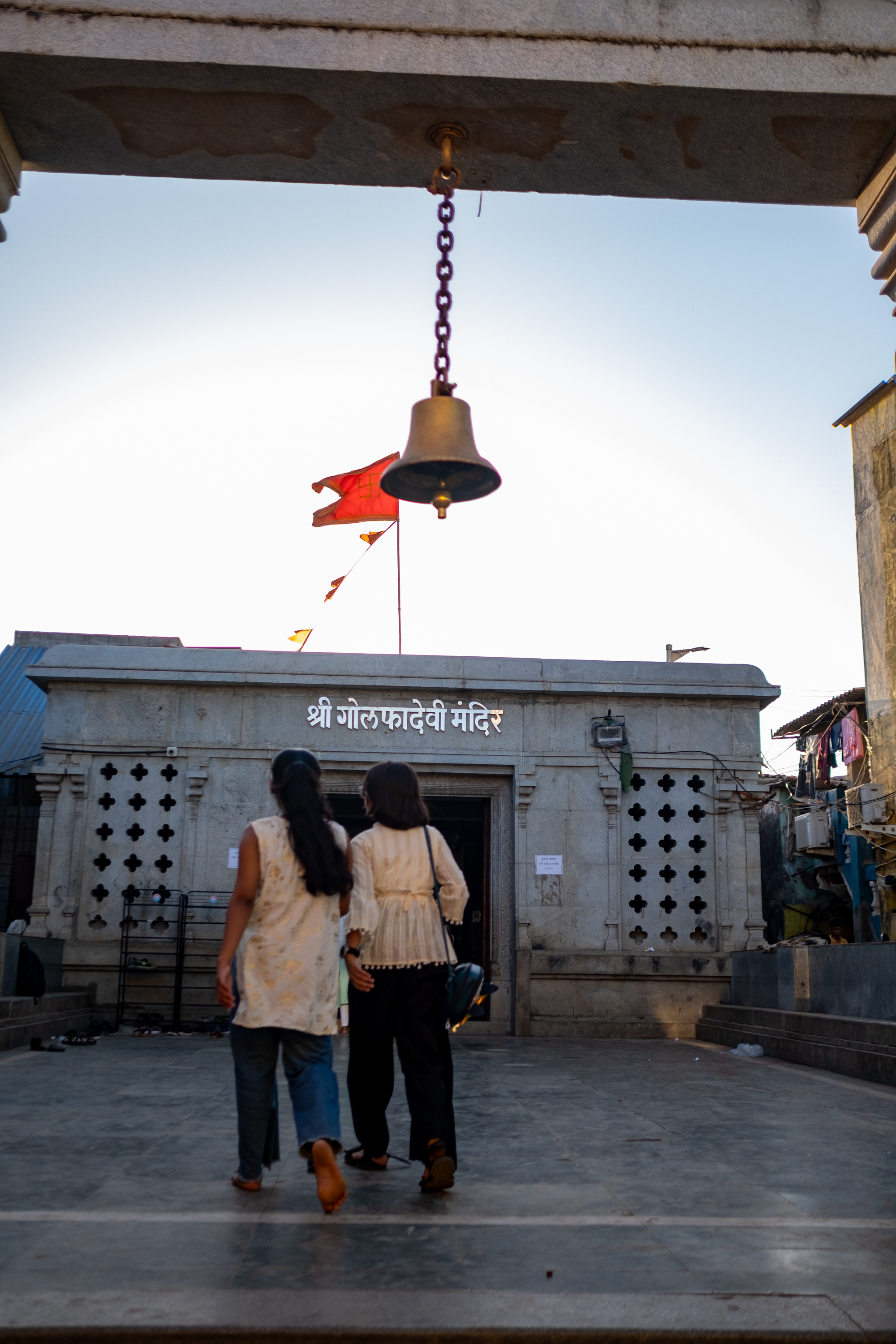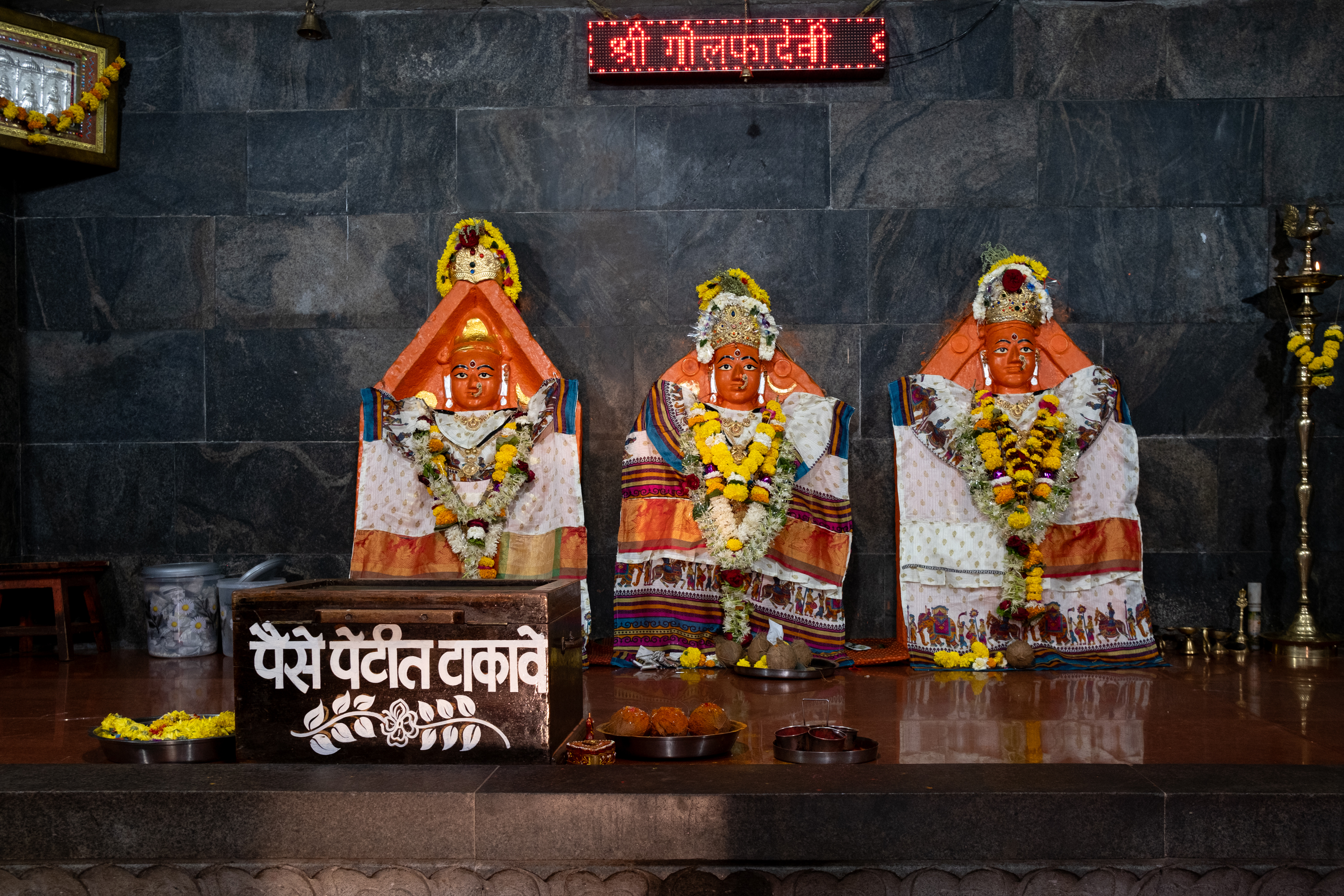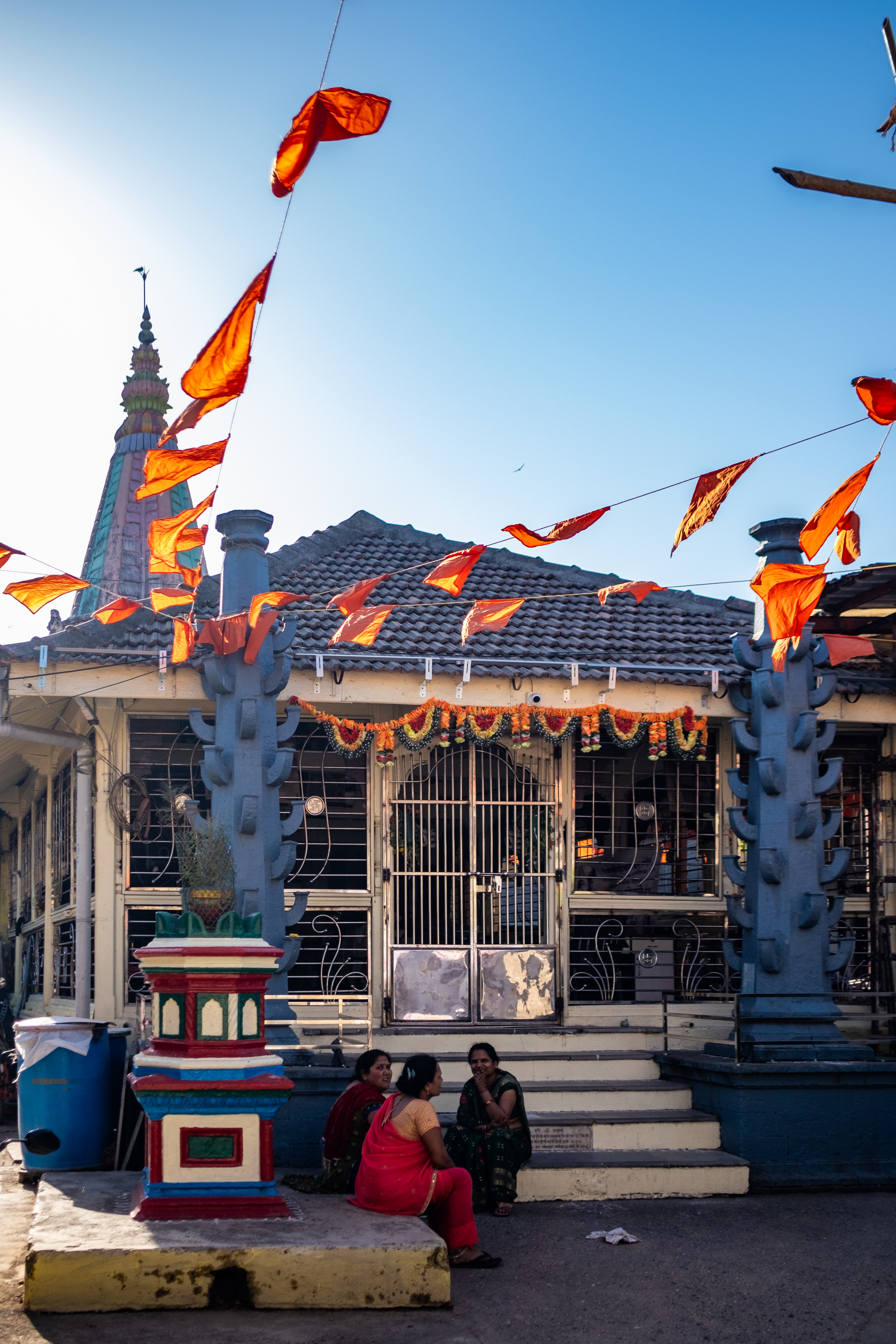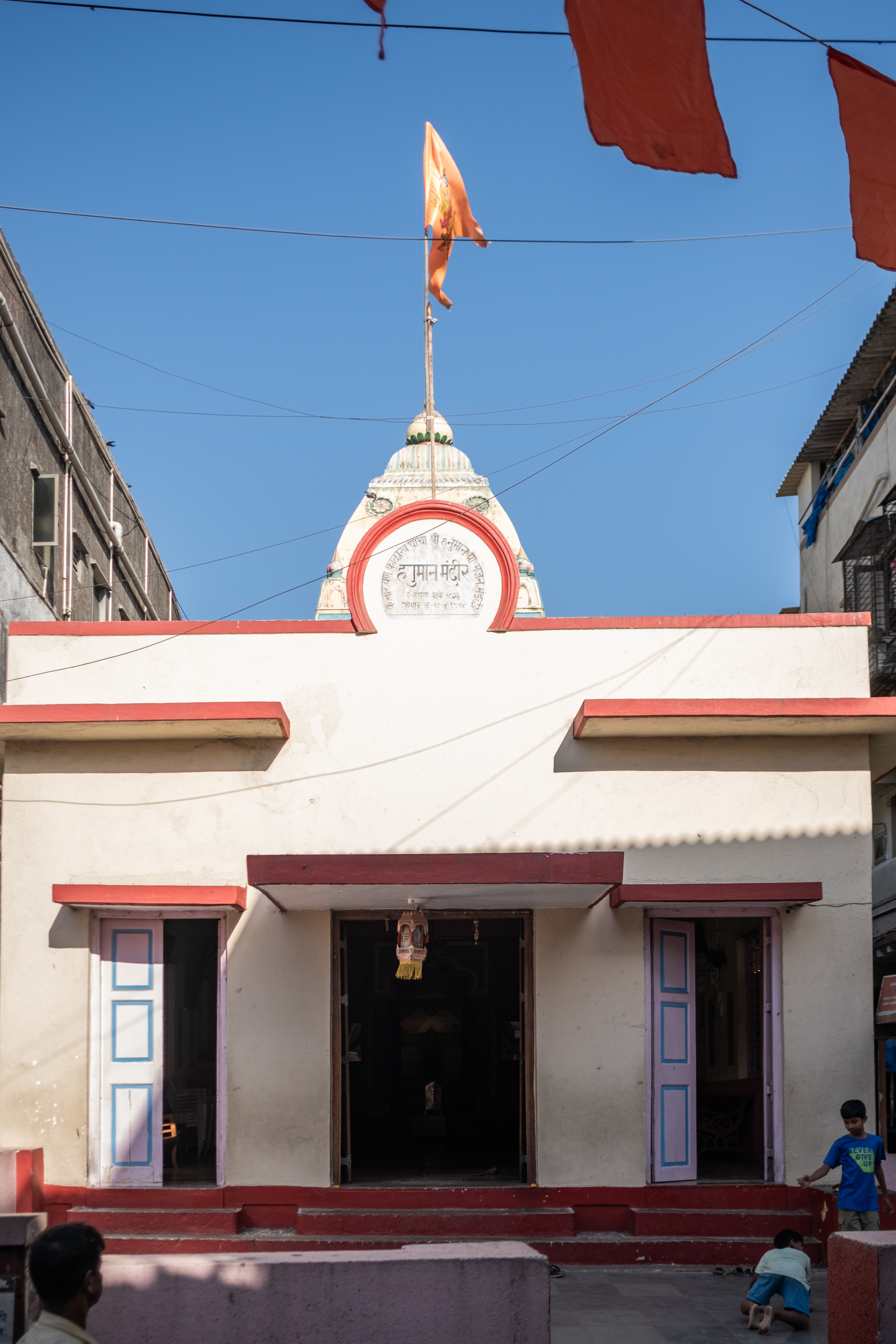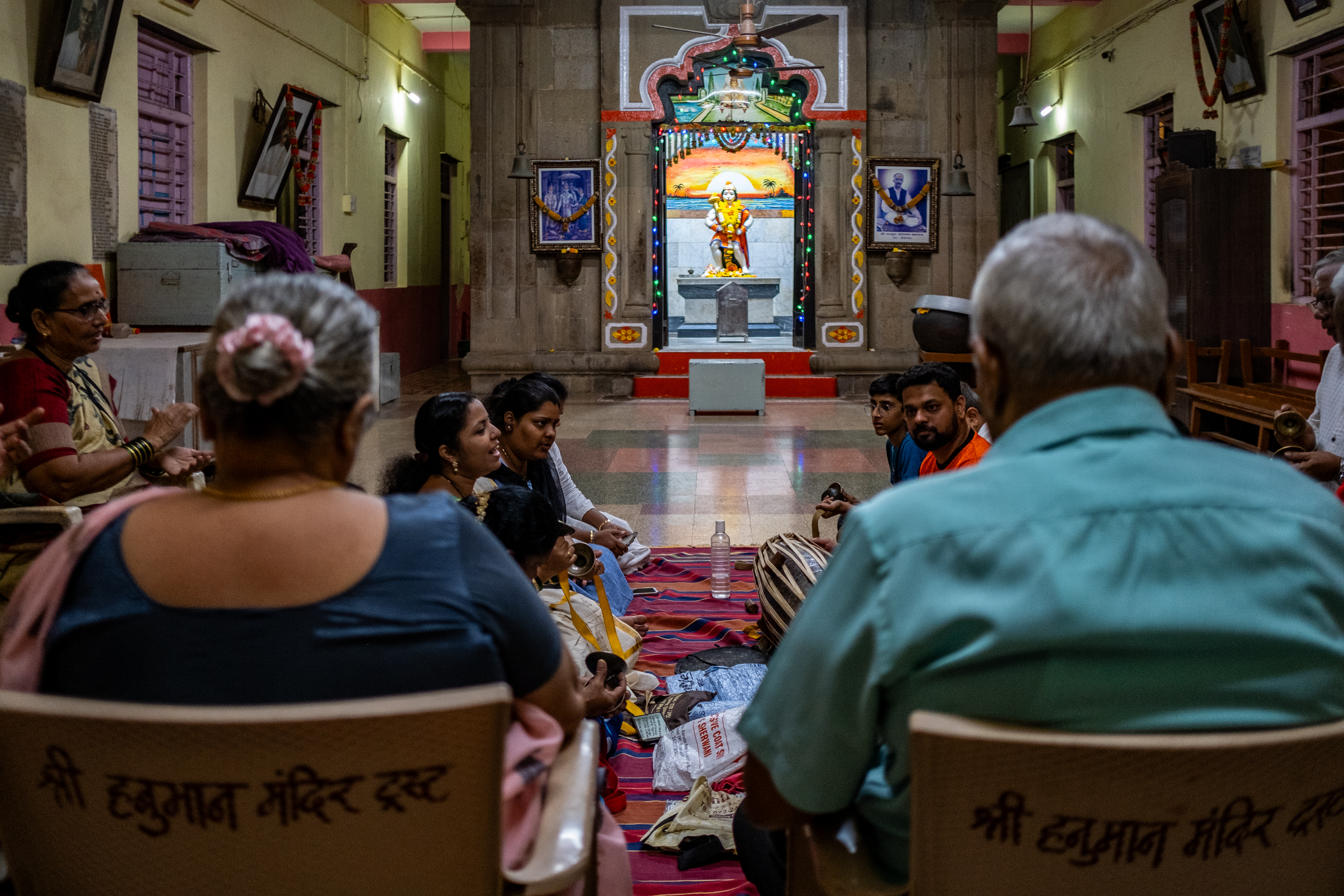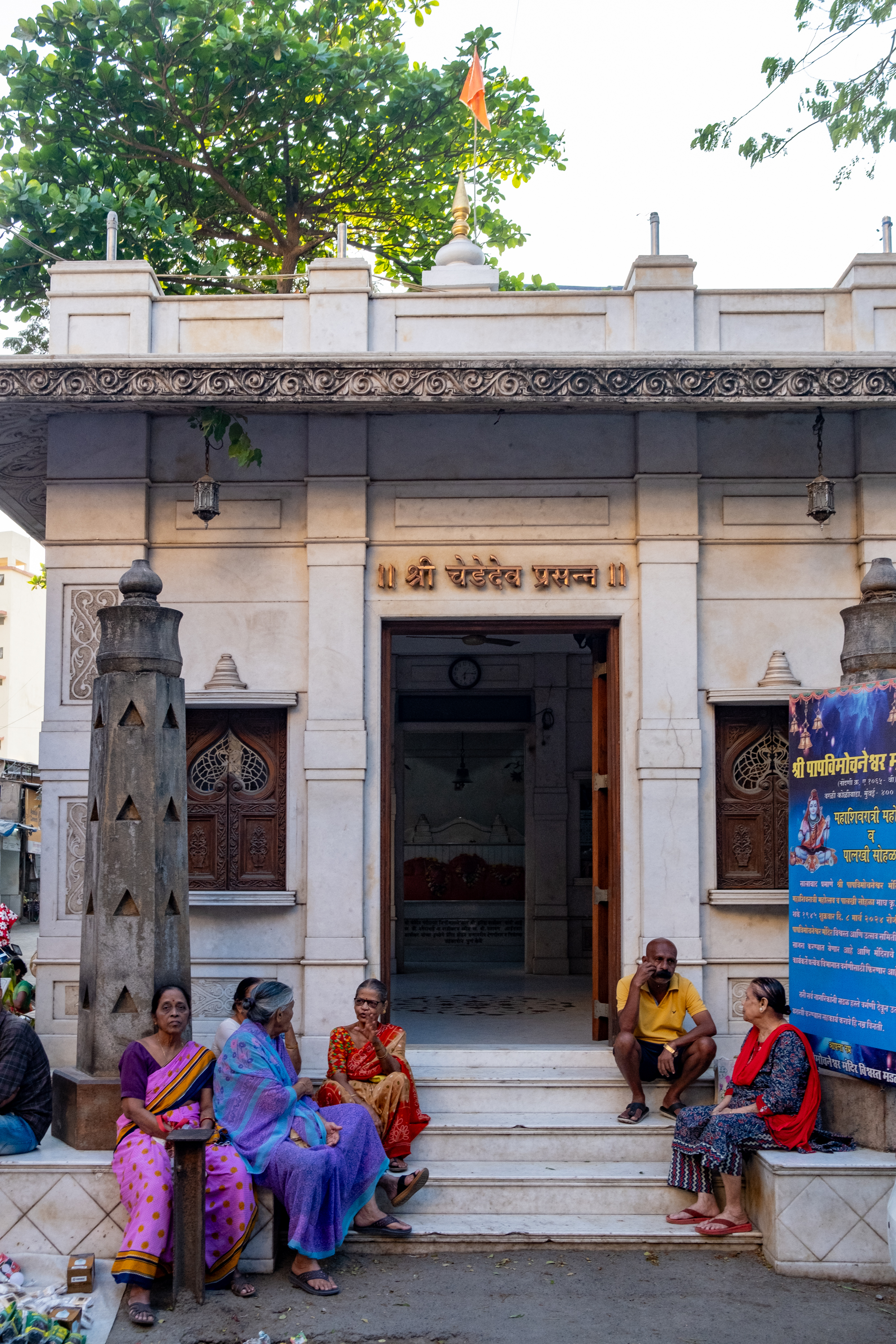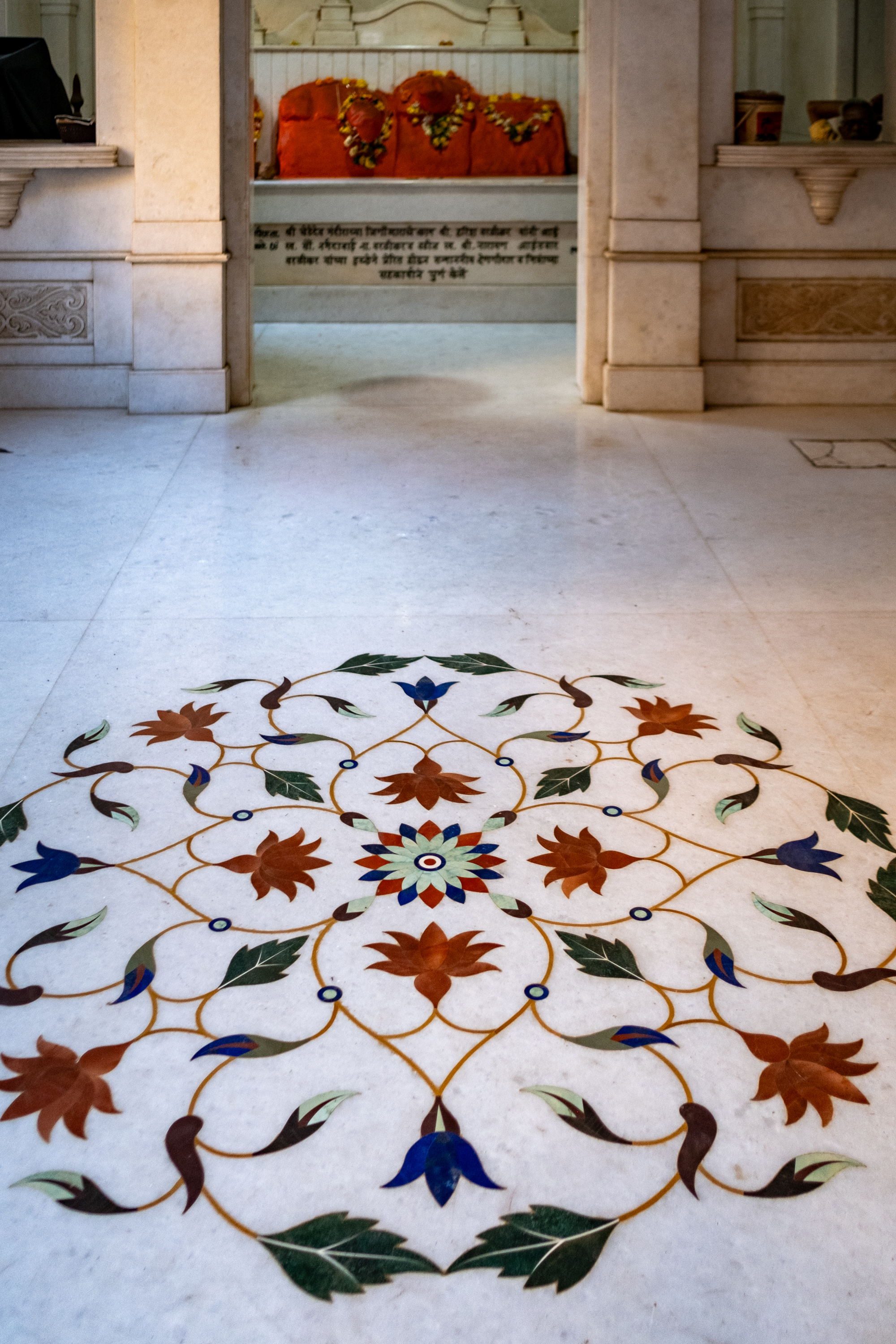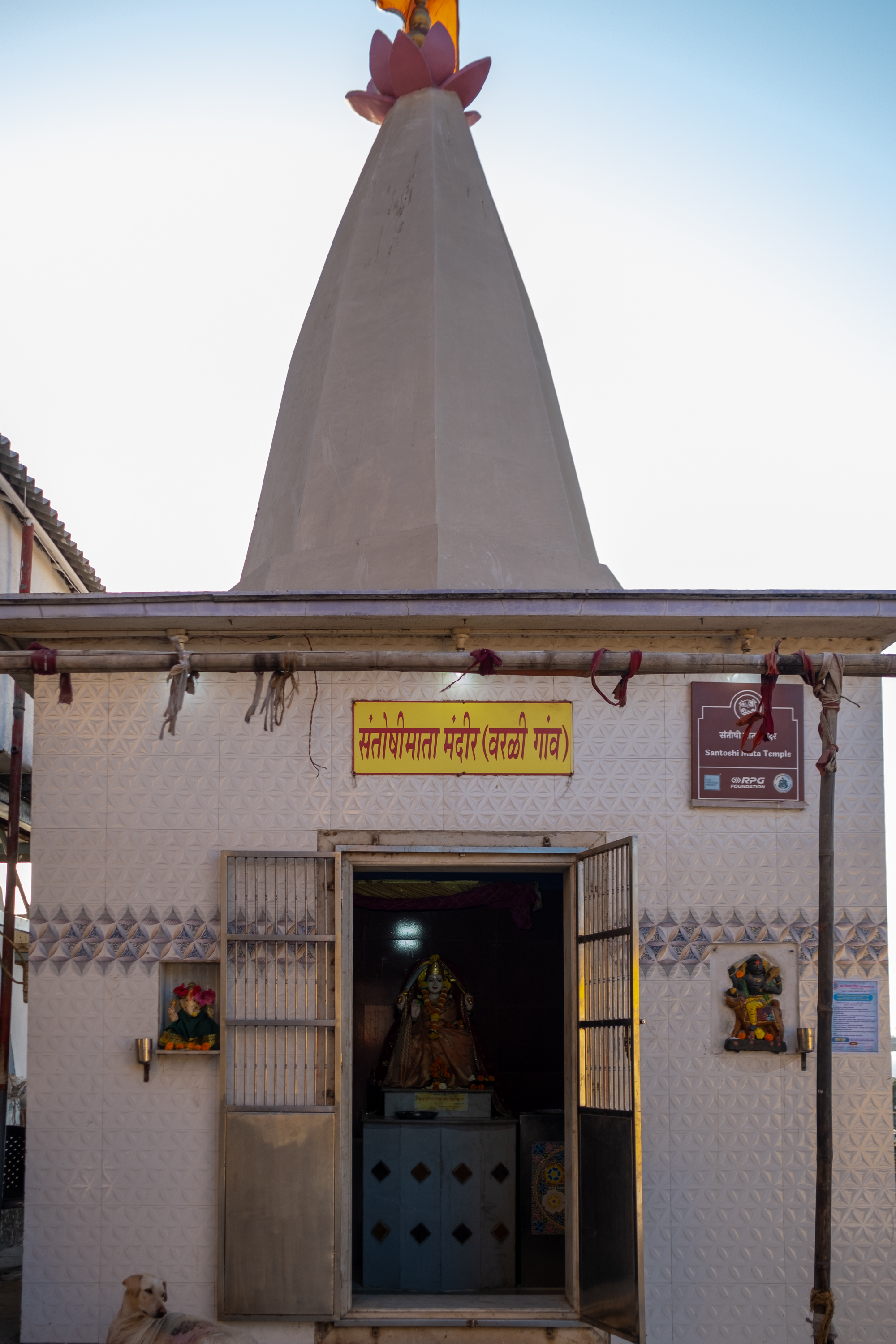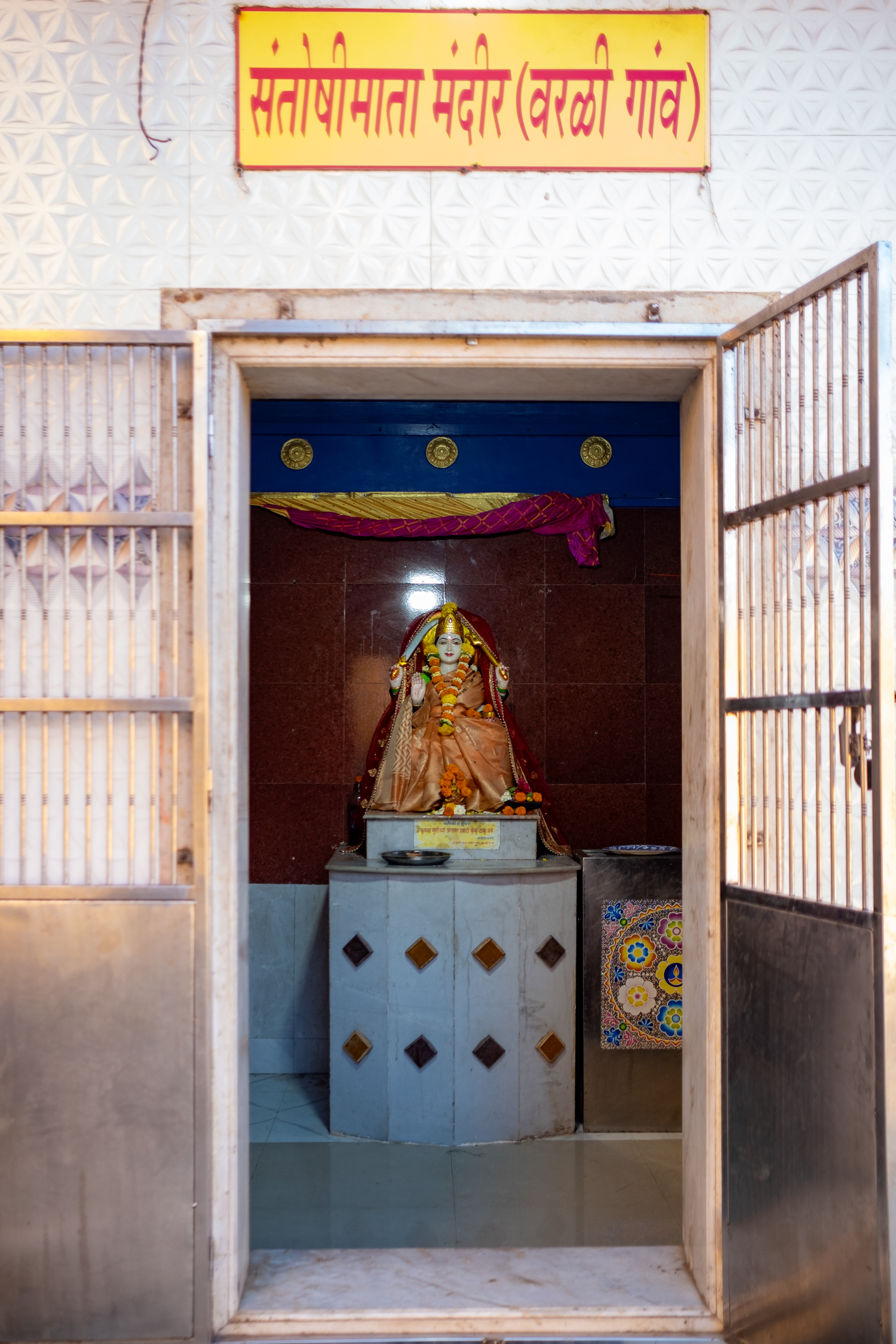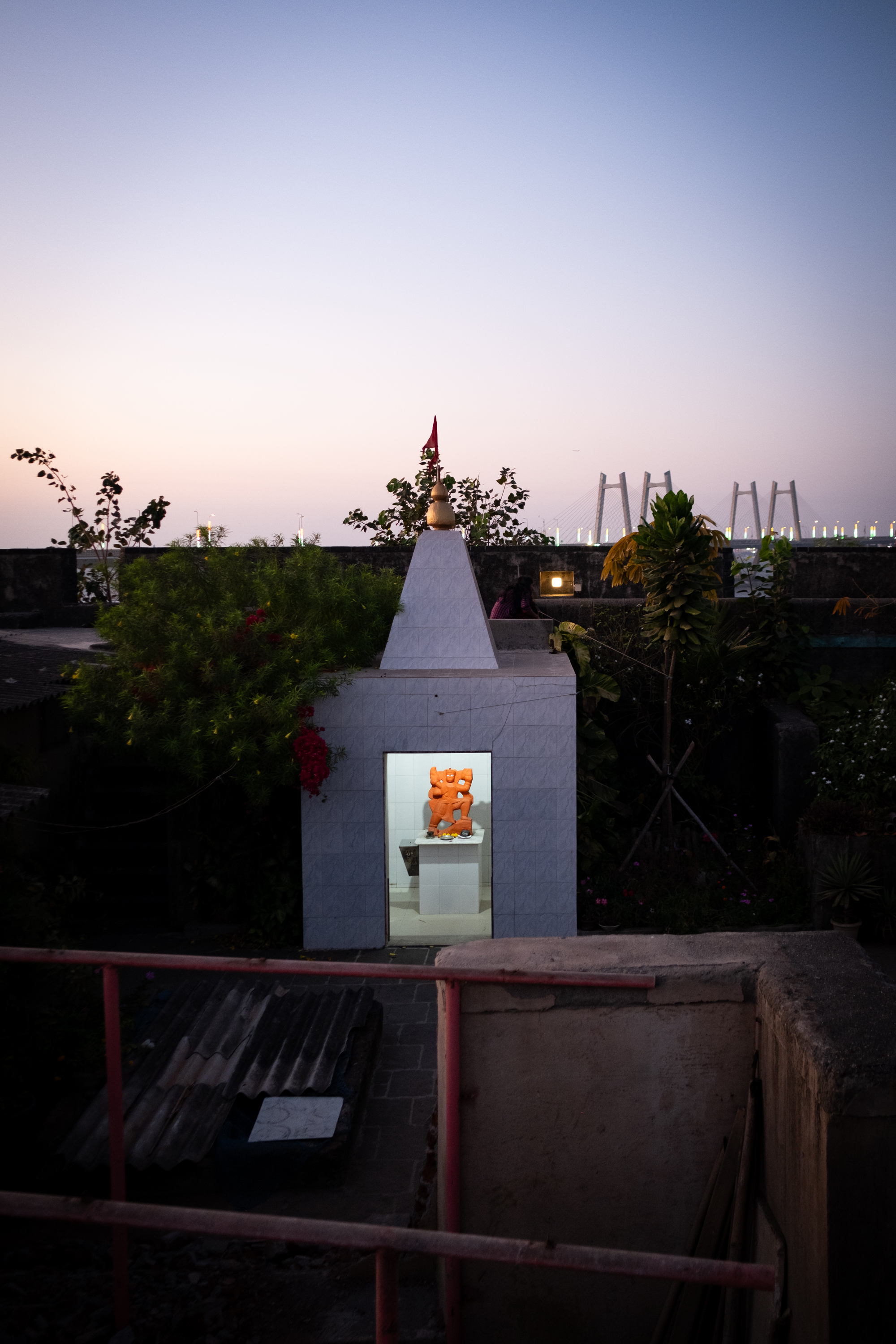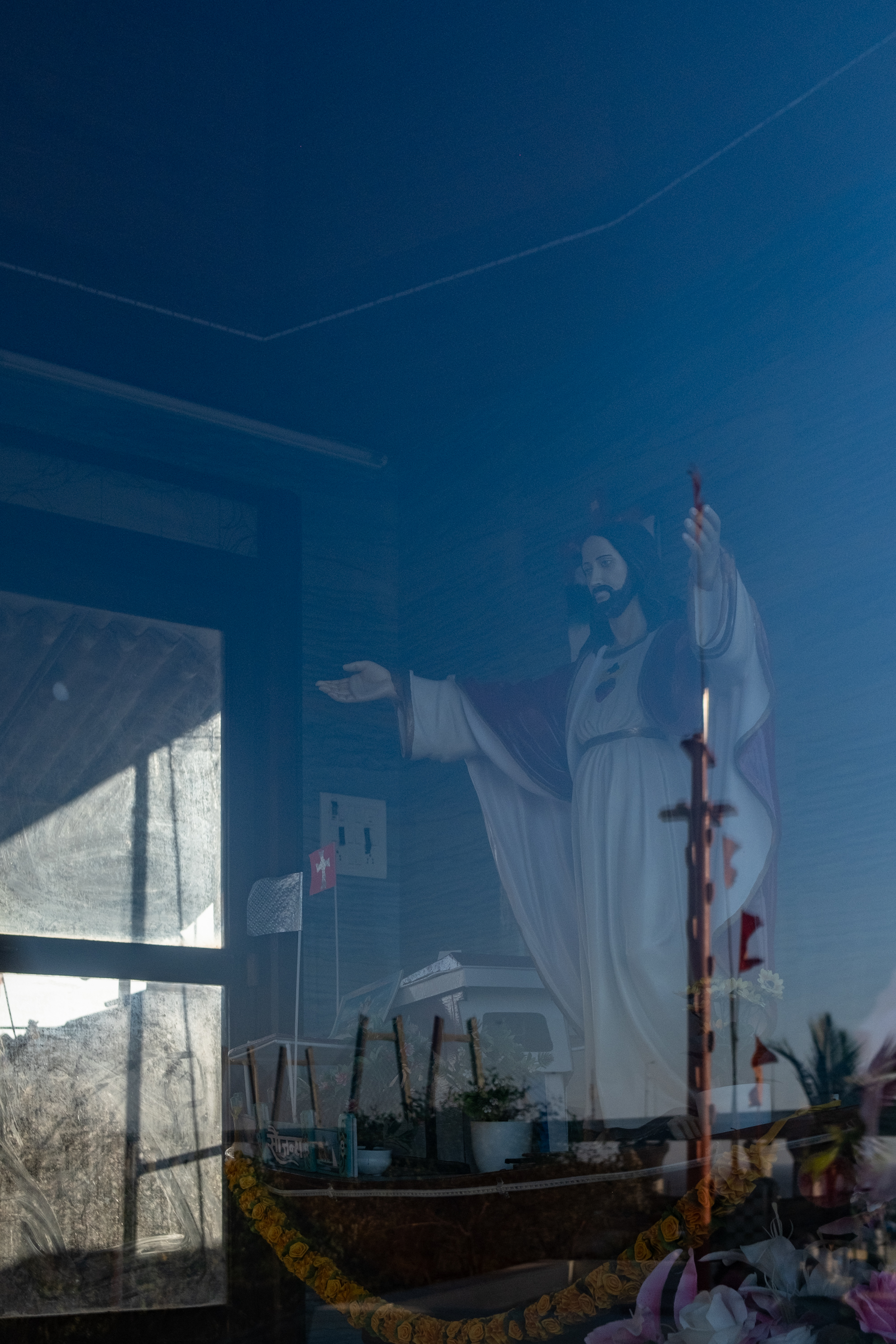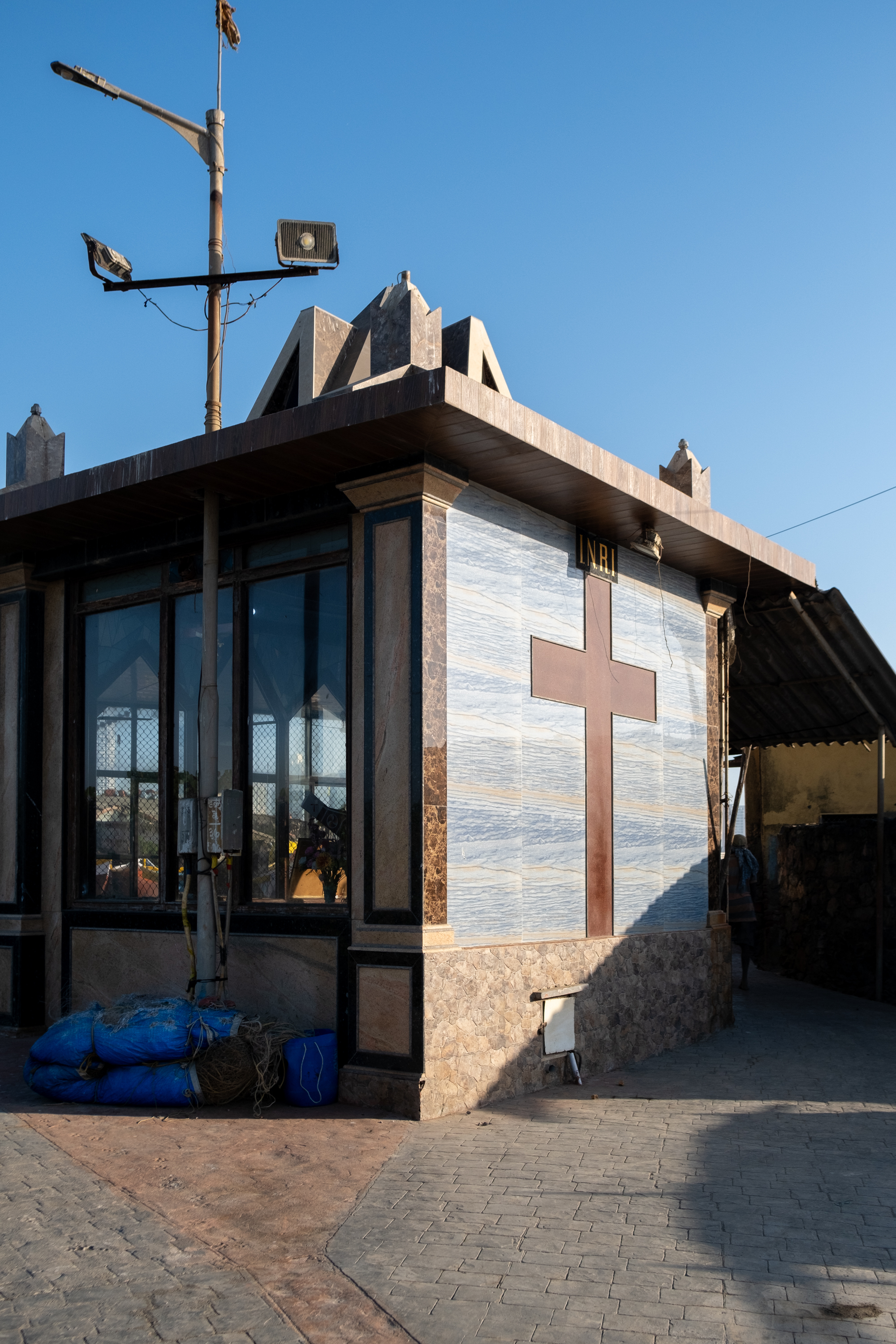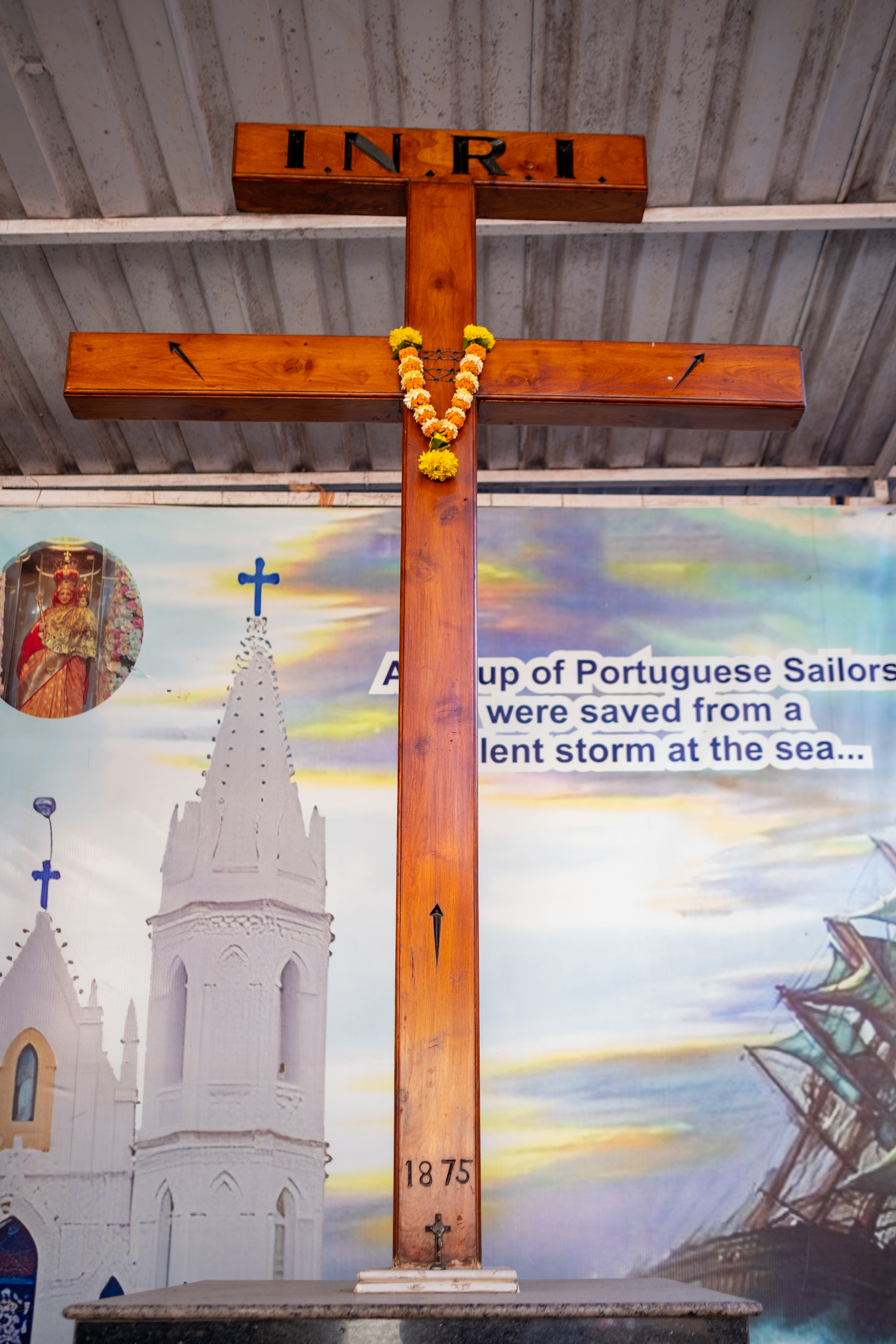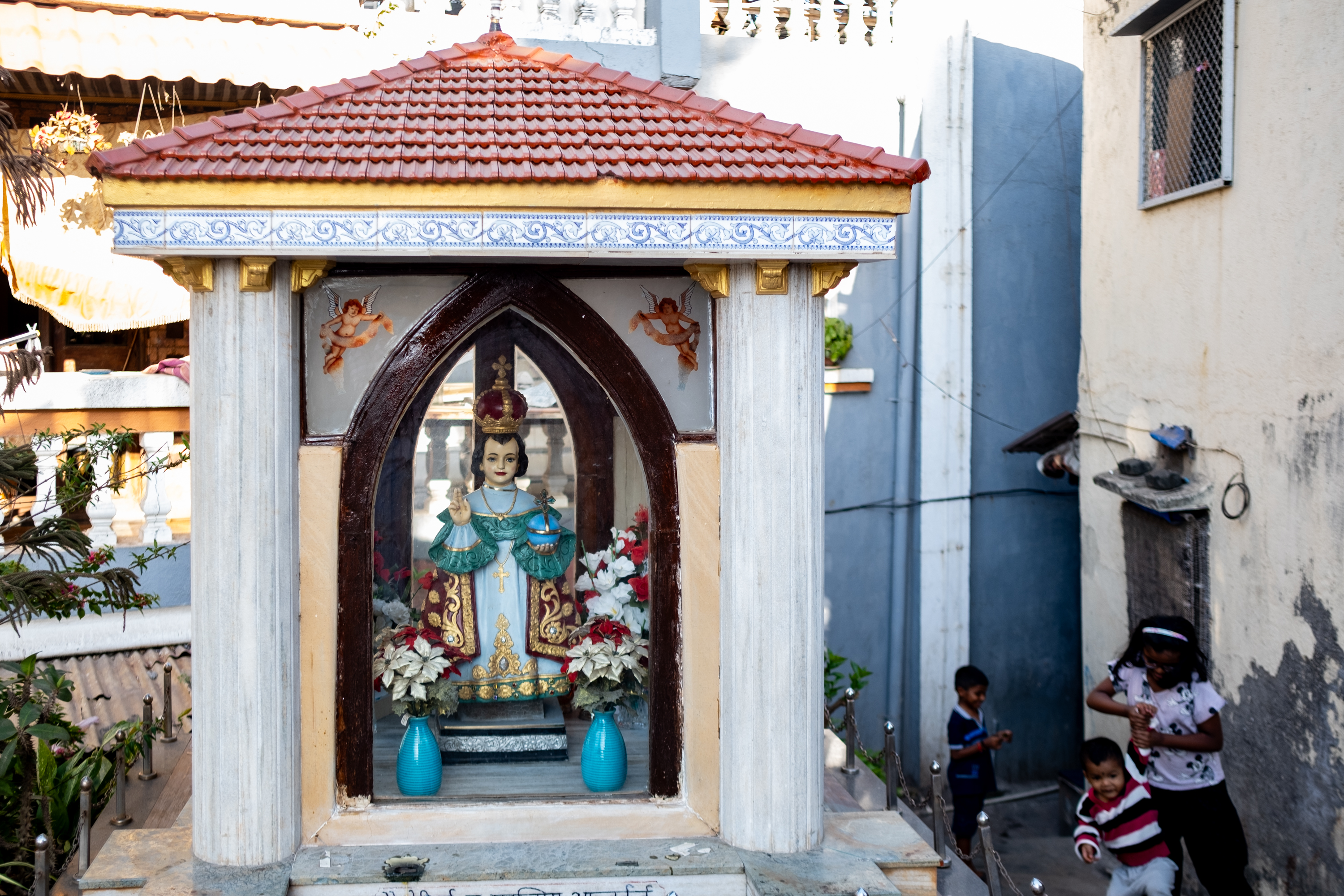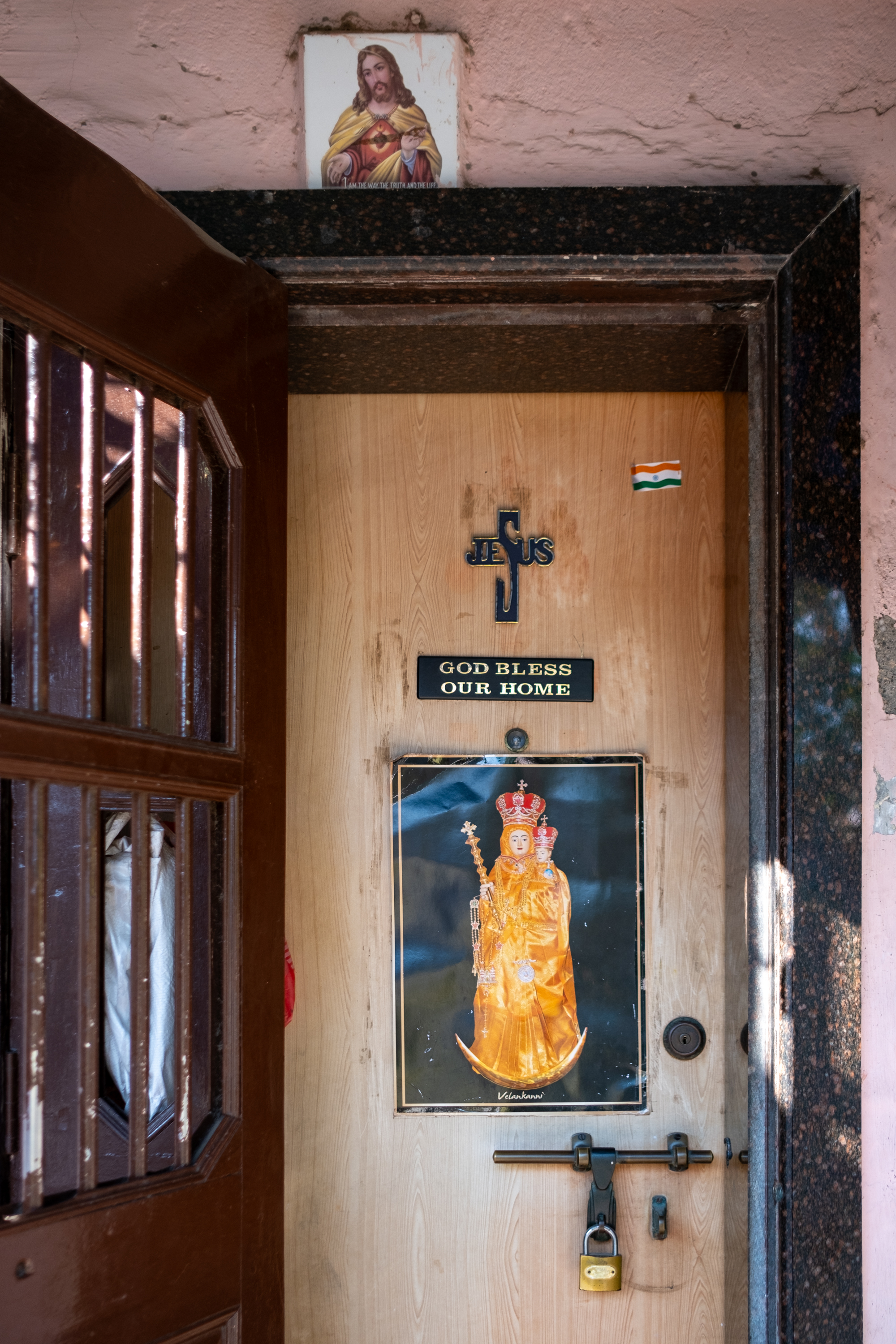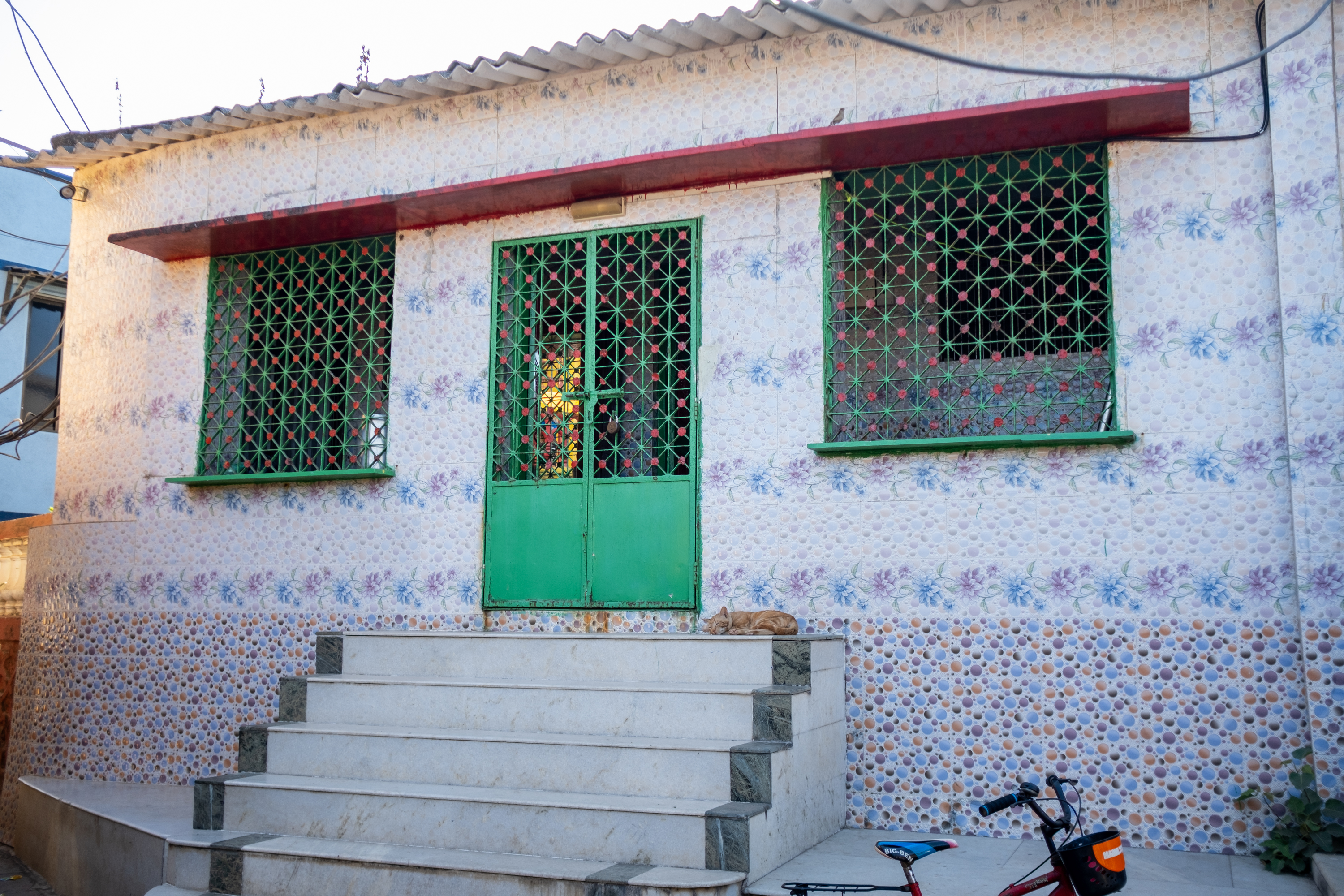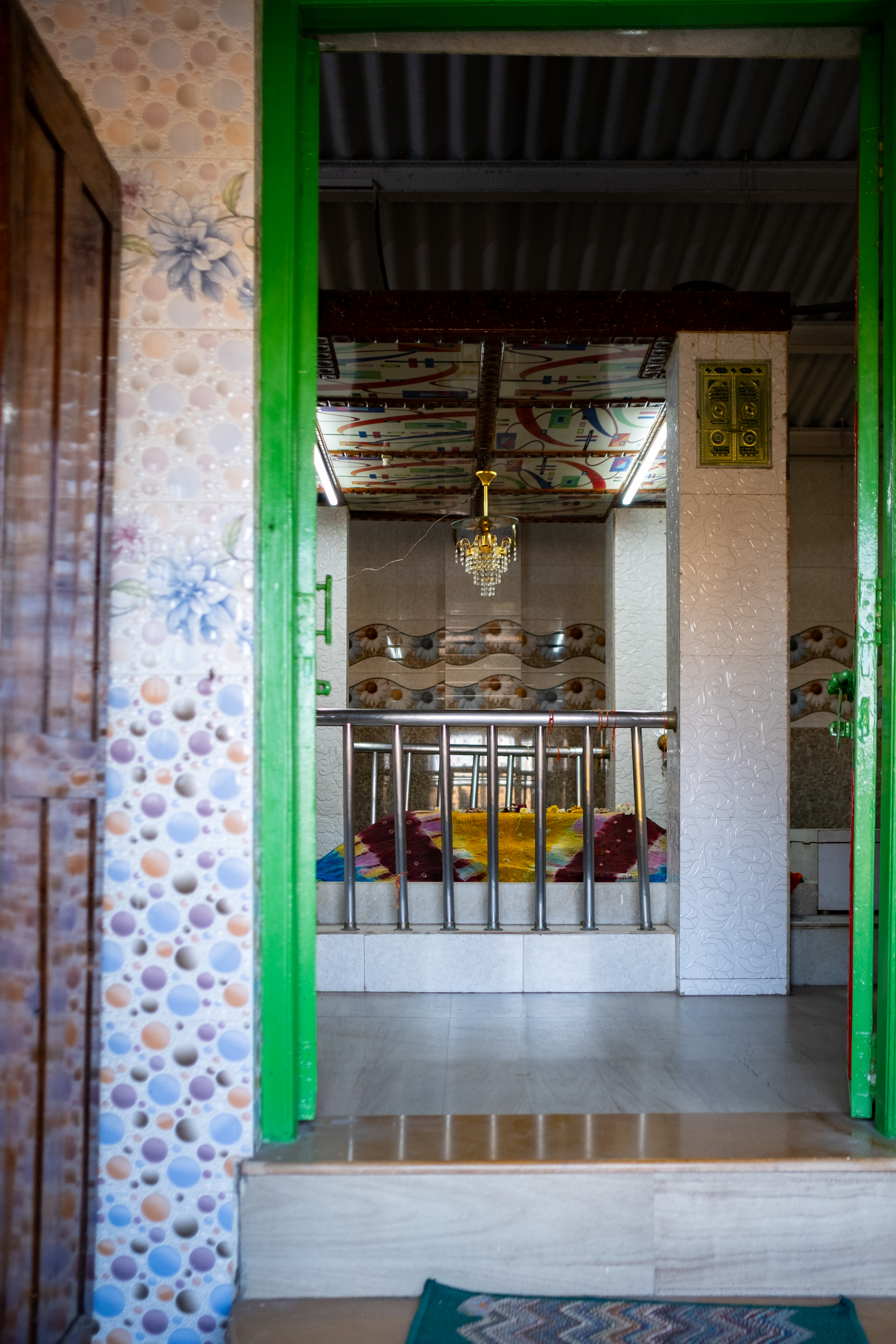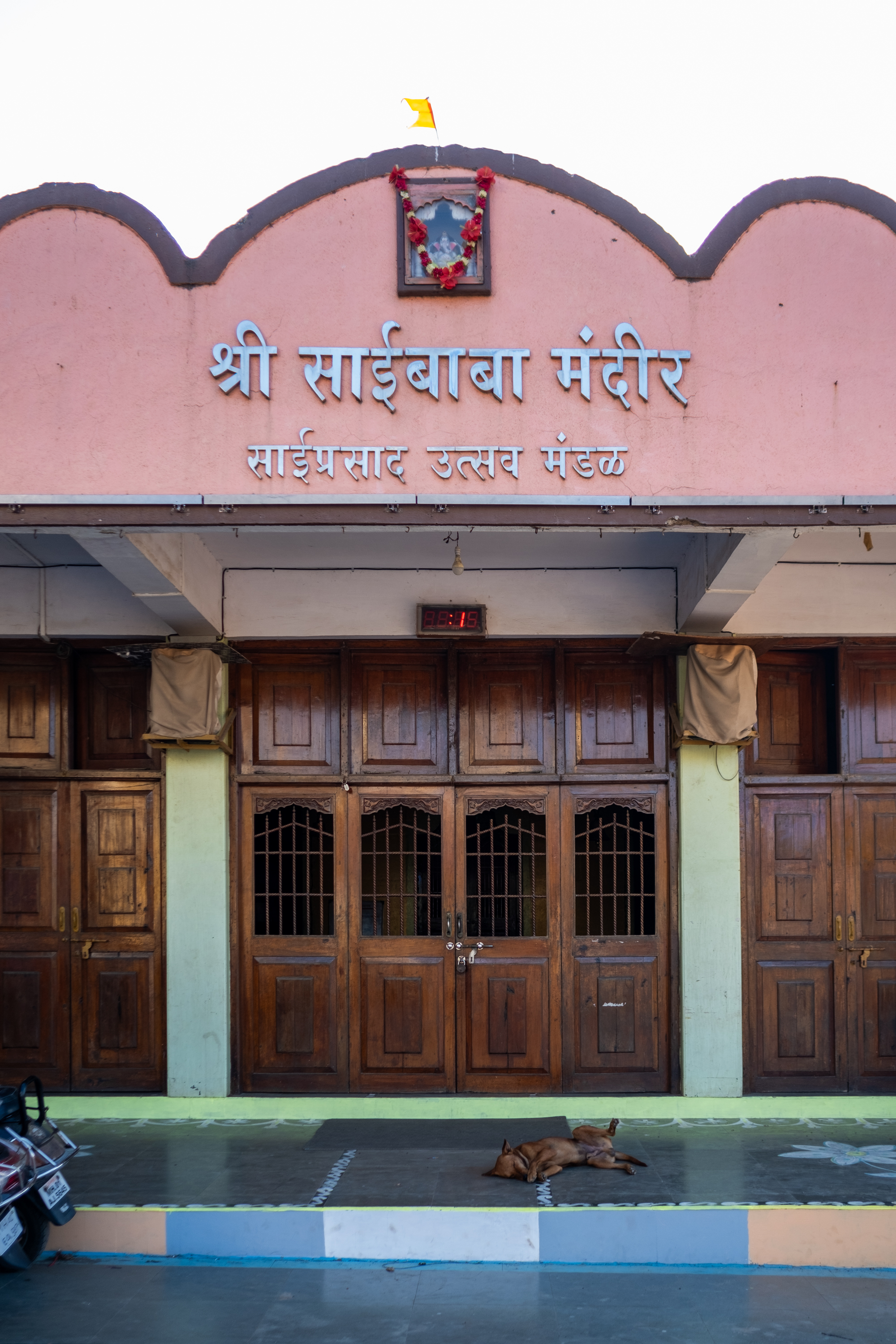Diverse Religious Practices at Worli Koliwada
Worli Koliwada is a significant cultural and historical landmark in Mumbai, representing the city's maritime heritage. The Gujarat Sultanate gave the Portuguese seven islands, including Worli, under the Treaty of Bassein (1534). The Koli and Agri communities, who worked as farmers, salt cultivators, toddy tappers, and fishermen, settled these sparsely populated islands. Worli is bordered by Bombay Island to the south and Mahim Island to the north. Narrow creeks and low-lying areas prone to flooding during high tides separate Worli. Early Portuguese records describe the place as Varel (Varli in the vernacular pronunciation), which was later anglicised to Worli.
Several origins have been suggested for Varli, though none can be definitively corroborated. One theory suggests that Varli derives from vad, the local name for the abundant banyan tree (ficus indica) in the coastal ecosystem. The banyan tree also inspires the name of another Mumbai suburb, Vadala. Speculation suggests that Worli might have derived from the Marathi word war/var, meaning 'upper,' in reference to its location north of Bombay Island. The Portuguese established their settlement on Bombay, which was the largest island in the archipelago, and gave its name to the surrounding region.
Worli, along with the other islands, were handed over by the Portuguese to the English in the 1660s as part of the dowry of Catherine of Braganza (daughter of Portuguese King Manuel II) when she married King Charles II of England. The English constructed a small fort at the northern tip of Worli Island, outfitted with cannons, to thwart the rampant piracy and coastal raids of the sixteenth and seventeenth centuries. Both this fort and Mahim Fort on Mahim Island functioned as watchtowers, monitoring the surrounding areas and waters to safeguard coastal settlements and trade routes. Built of laterite stone, Worli Fort provides a panoramic view over the Arabian Sea and Mahim Bay.
After the English Crown leased the islands to the East India Company in 1668, the company made efforts to improve the islands' difficult conditions, making them more habitable and conducive to trade and urban development. Governor William Hornby (1771–1784) initiated a mega-engineering project to close the breach between Worli and Bombay by constructing a causeway, transforming the islands into a contiguous landmass. In the nineteenth and twentieth centuries, vast tracts of land were reclaimed from the sea to be used for residential, commercial, and industrial purposes, which created some of Mumbai’s prominent sea-facing boulevards like Marine Drive, Carter Road, Juhu Beach Road, Nariman Point, Bandra Promenade, and Worli Sea Face.
Worli's coastal stretch, once a fishing village, has transformed into one of Mumbai's most upscale neighbourhoods, characterised by high-rise residential buildings featuring some of the tallest skyscrapers in Mumbai. High-end real estate and luxury residences along the Worli Sea Face are much sought after by movie stars, celebrities, and business tycoons. There is a constant push from real estate developers to acquire land in Worli for redevelopment into high-rise apartments and commercial complexes. In addition, the high population density in Worli Koliwada and major infrastructure projects, such as the Bandra-Worli Sea Link and potential metro lines, have increased land value and development pressure.
Worli fishing village is squeezed on a narrow cape surrounded by sea on two sides, with the fort at its northern tip, now dominated by the iconic 5.6-kilometre-long Bandra-Worli Sea Link. The village is home to the Koli community—the island's original inhabitants—who lived here for centuries, long before the emergence of a megacity. Despite facing significant threats to their livelihood, the Kolis have maintained their traditional fishing practices, and fishing remains their primary occupation. During its planning and construction phases, the Bandra-Worl Sea Link faced significant opposition from the fishing community of Worli Koliwada, which expressed concern about the sea link's impact on the marine ecosystem. Despite the protests, they completed the sea link, which now serves as a symbol of modern Mumbai.
Worli village has narrow, winding lanes that reflect an organic layout emerging over centuries. Fishing infrastructure such as wooden boats, nets, and storage facilities are conspicuous by their presence. Because of its coastal location, the village is vulnerable to coastal erosion and rising sea levels, which can threaten fishermen's livelihoods and damage houses built close to the sea. The low-rise houses feature small verandas, courtyards, and sloping roofs to drain the heavy monsoon rains. Typically, boats and houses are painted with fishing-themed decorative motifs. However, the narrow lanes make it difficult for large vehicles to navigate, and there are issues with drainage and sanitation. Flooding during monsoons is a recurring problem. The unplanned nature of development makes it difficult to implement urban planning solutions without disrupting the traditional way of life.
Through the assimilation of diverse religious practices, Kolis have developed a syncretic culture. Temples and shrines dedicated to local deities are scattered throughout the village. At the village entrance is the Chede Dev Temple, which is dedicated to village guardian deities who ward off evil forces from entering the village. At the other end of the village, near the fort, is the Vetal Temple, dedicated to Panyatla Vetal and Aagya Vetal. The temple also houses the mother goddesses Sakhba Devi, Golfa Devi, and Harba Devi. At the Golfa Devi Temple, the same trio is worshipped in their anthropomorphic forms, adorned with jewellery and sarees. Other historic temples include the Maruti Temple, where Hanuman Jayanti is observed every year, and the Papvimochneshwar temple, dedicated to Lord Shiva. There is also a dargah visited by Muslims.
In the colonial era, many Kolis converted to Catholicism. The village is dotted with chapels, shrines, and Christian icons erected by residents. The cultural life of Kolis is rooted in tradition, with festivals and community gatherings playing a central role. Families have lived next door for many generations, and they participate with enormous joy and enthusiasm in each other’s festivals and family events, irrespective of religion and caste. On the full moon day of the Hindu month of Shravan, the Koli community comes together to celebrate Narali Purnima. Fishermen and their families go to the seashore and throw coconuts into the water as a symbolic offering to appease the sea god Varuna. This marks the end of the monsoon season and the beginning of the fishing season, which is crucial for the livelihoods of those in the Koli community.
As Mumbai city has expanded, Worli village, like many historic neighbourhoods, has faced significant land pressure due to various factors, including rapid urbanisation, real estate development, and infrastructure projects that threaten the survival of the village and its surrounding ecosystem. Rising sea levels and the increased frequency of severe weather events due to climate change pose significant risks to the coastal community. In addition, environmental pollution and declining fish populations pose significant challenges to Kolis in the fishing business. As younger generations seek employment opportunities outside the fishing industry, there is a risk of losing traditional practices, livelihoods, and cultural heritage. Despite the challenges, residents of Worli Koliwada have preserved their traditional way of life, contributing to Mumbai’s historical and cultural diversity.
Worli fishing village is squeezed into a narrow cape surrounded by sea on two sides. The fort is now dominated by the iconic 5.6-kilometer-long Bandra-Worli Sea Link at its northern tip. The village is home to the Koli community, the island's original inhabitants who lived here for centuries, long before Mumbai became a megacity.
For many Koli families, their kula devata is Ekvira Devi, regarded as a manifestation of the goddess Renuka. Kolis make a yearly pilgrimage to Ekvira Devi Temple at the Karla Caves, near Lonavala.
During its planning and construction phases, the Bandra-Worli Sea Link faced significant opposition from the fishing community of Worli Koliwada. They expressed concern about the impact Sea Link would have on the marine ecosystem. Despite protests, the Sea Link was completed and has become a symbol of modern Mumbai.
The Vetal Dev Temple is dedicated to Panyatla Vetal and Aagya Vetal. The temple also houses the mother goddesses Sakhba Devi, Golfa Devi, and Harba Devi. The stone images are coated in thick layers of vermillion.
Kolis venerate self-manifested lingams (svayambhu) in the form of naturally occurring rocks or geological features. They are anthropomorphised—that is, given eyes—to resemble the faces of gods and goddesses, each with a unique mythology.
Pictured here is the flagstaff (dhwajastambh) at the Vetal Dev Temple. The saffron flag, which is visible from a long distance, symbolises the presence of the divine.
Pictured here is the flagstaff (dhwajastambh) at the Vetal Dev Temple. The saffron flag, which is visible from a long distance, symbolizes the presence of the divine.
A pair of lions stand guard at the base of a torana (stone gateway) at the Golfa Devi Temple.
Necklaces, ear ornaments, nose rings (naths), and crowns made of gold and precious stones adorn the stone images of Sakba Devi (left), Golfa Devi (centre), and Harba Devi (right).
Founded on 18 August 1904, the Papvimochneshwar Temple has maintained much of its traditional architecture. The temple entrance is flanked by a pair of deepastambhs (lamp columns), as well as a tulsi holy basil planter (on the left).
Built around a self-manifested (syambhu) lingam in the inner sanctum (garbagriha), the Papvimochneshwar Temple honors Lord Shiva. A marble Nandi sits in the mandapa facing the sanctuary.
Papvimochneshwar Temple has shrines dedicated to other gods and goddesses from the Hindu pantheon. There are shrines to Lord Hanuman (on the right) and Ganapati (on the left) on either side of the garbagriha. A shrine dedicated to Sri Krishna is located next to the Ganapati shrine.
Kolis celebrate Hanuman Jayanti (the birthday of Lord Hanuman) at the Maruti Temple, established in 1954.
A portrait of Sadhguru Narayan Maharaj (1885–1945), a spiritual teacher and guru, hangs next to the doorway (on the right) to the inner sanctum (garbagriha) at the Maruti Temple. Above the doorway is a painting of Lord Ganesh. On the left is a painting of Shri Ram, Shri Lakshman, and Devi Sita, with Lord Hanuman paying obeisance at their feet.
The Maruti Temple features a stone inner sanctum, known as the garbagriha, around which a circumambulatory path winds. A spacious mandap in front of the garbagriha is used for prayers and congregations. Devotees gather here to chant the Hanuman Chalisa and sing bhajans.
The Chede Dev Temple is situated at the entrance to Worli village. A pair of stone deepasthambs (lamp columns) flank the doorway. People place diyas (oil lamps) in the triangular niches cut into the deepastambhas.
The floor of the Chede Dev Temple is adorned with inlay work. Donations from the Koli community have renovated and given the temple a new look.
The temple priest performs the kaul lavane ritual on behalf of the devotees to communicate the guardian deities' will. The priest places a pair of flower buds, flowers, or leaves on the upper right and upper left sides of the deity during this ritual. The deity interprets the flower or leaf's first fall as a sign of favor to the question the devotee is seeking. A fall from the right indicates a ‘yes,’ while a fall from the left indicates a ‘no.’
The Santoshi Mata Temple honors Santoshi Maa. She is a relatively new addition to the Koli pantheon of mother goddesses. The box-office success of the 1975 devotional movie Jai Santoshi Maa, which was based on the goddess and her devoted devotee Satyavati, is largely responsible for Santoshi Maa's recent rise to fame.
The blockbuster hit movie Jai Santoshi Maa legitimised Santoshi Maa as a mother goddess in the Koli pantheon with iconography borrowed from other mother goddesses. For example, her characteristic posture while sitting on a lotus mirrors that of the goddess Shri Lakshmi. The weapons she holds—the sword and the trident—are traditional attributes of the goddess Devi Durga.
The oldest surviving structure in the village is Worli Fort, which has a shrine devoted to Lord Hanuman. Overlooking Mahim Bay, this small fort served as a watchtower against piracy, which was rife in the Arabian Sea from the sixteenth century to the eighteenth century.
A statue of Jesus Christ standing in a wooden boat that is the kind Kolis use for fishing. Christian Kolis use this type of iconography to integrate their Christian faith with their primary source of livelihood.
Christian Kolis prays at the chapel, which was constructed in 2005 near the peninsula's tip, next to the Vetal Dev Temple. They celebrate mass at the chapel to commemorate the start of the fishing season.
Worli village installed Our Lady of Velenkanni Cross in 1875. A shrine honoring the Blessed Virgin Mary stands next to it. The cross is associated with the Basilica of Our Lady of Good Health, also known as the Sanctuary of Our Lady of Velankanni, a major Christian pilgrimage centre located in the town of Velankanni, Tamil Nadu.
The village is dotted with chapels, shrines, and Christian icons erected by residents. On May 21, 1954, residents erected this open-air shrine, decorated with colourful ceramic Srimati Maribai Shanwar Satbhut and Shravanibai built it in memory of her deceased husband, Paskou Satbhut.atbhut.
During centuries of colonial rule by European powers, some of the Kolis converted to Catholicism, and they have maintained their distinct identity ever since. The architecture of Koli homes reflects this, featuring shrines dedicated to Jesus or Mother Mary.
Religious icons such as the holy cross, Jesus, and Mother Mary are placed above doors and entrances in Christian Koli homes. This residence has a poster of the Velankanni Matha, commonly known as Our Lady of Good Health. To integrate into the local traditions, the Velankanni Matha wears a saree, a custom from India.
Worli Koliwada is home to a small Muslim population. This dargah (structure that houses a saint's tomb or shrine) is the only Islamic shrine in Worli village.
The dargah is believed to be the resting place of two female saints. For this reason, the mazar (tomb or shrine of a saint) allows women to visit and offer prayers.
A modern structure, the Sai Baba Temple, built by followers of Shirdi Sai Baba, a fakir (ascetic) who is worshipped by both Hindu and Muslim devotees, is situated close to the Worli Fort. The area around the temple now serves as a space for hosting cultural events at Worli Koliwada.
